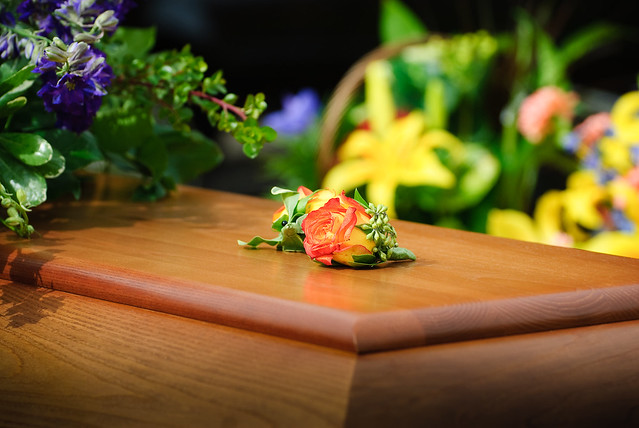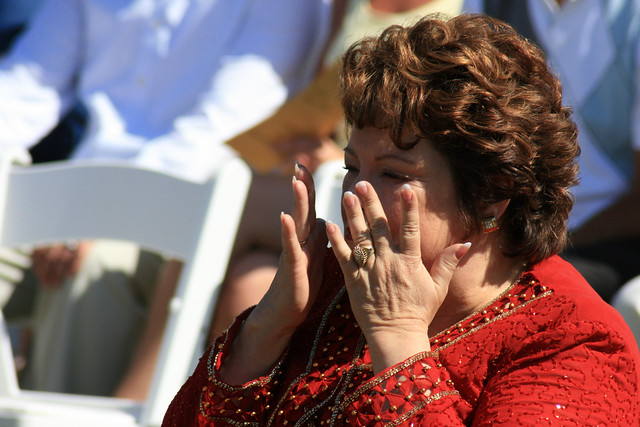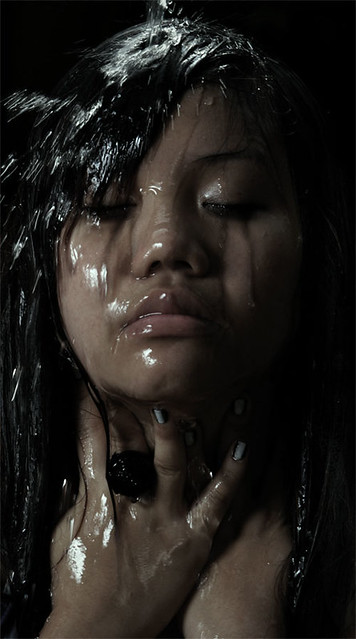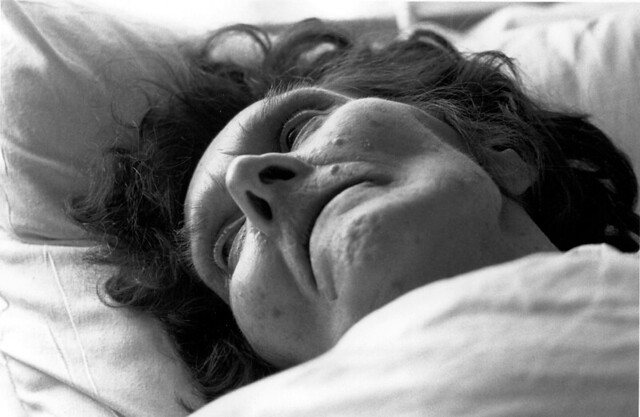Death
“I don’t want to see her body!”

© 2009 Don LaVange, Flickr | CC-BY-SA | via Wylio
“I can’t, I can’t!” screams the 30 year old mother of two
with trembling body and clouded mind.
Her grandmother, once familiar, now foreign.
Hands cold, lips shut.
Eyes closed with glue.
A body that once embodied love
now fear.
Once comfort, now pain.
Her parents urge her again . . .
“I don’t want to see her!”
The protestations echo though the walls and down to our bones
“What’s going on?” “WHATS GOING ON?!”
asks the protester’s two year old daughter.
Her small voice isn’t lost in the noise.
Her four-year-old brother quickly hugs her
and whispers
“It’s okay”
She finds calm in his arms.
I listen.
I watch.
Waiting.
The stampede of grief settles like dust.
The two year old drops her crackers on the floor.
Her protesting mother picks them up one by one
“Let me throw them out.” I say.
“You never know what kind of germs are on a funeral home floor.”
The humor finds a small crack
that allows laughter instead of tears.
A kind word and a touch of humor.
A moment later, she straightens her back.
Wipes her face.
Grabs the hands of her children
She walks to the casket.
Listening to the screams of a bereaved mother

© 2009 Quinn Dombrowski, Flickr | CC-BY-SA | via Wylio
I write this as I’m listening to a mother frantically scream, “That’s my baby!!!” as she views the body of her deceased 24 year old son for the first time since his death. She’s kicking
screaming
stomping
weeping.
I write this as my own therapy … it’s hard to listen to. It must be harder to be her. I can’t imagine.
A Jewish couple who met in school, they were unable to have any kids of their own so they adopted what became their only son, now snatched away from an overdose.
Cold.
Limp.
Unnatural.
Helpless.
My dad comes over to me. We stare at each other for about 30 seconds in silence before he says, “Any mother would do that…” It’s hard to listen to. There’s nothing to say at these times, yet everything wants to be said.
*As with all my posts, circumstances, dates and details have been changed to protect the privacy of those involved.
The Trauma of Closing the Lid of the Casket
This is it.
The casket lid begins to quietly close
Your insides open and yell.
Your memories are now all you have.
There will be nothing new.
Your last look, your last touch
The beginning of your tears.
This is it.
Beliefs attempt to comfort
You cling to thoughts of a future hope
You will see them again.
Or.
Is this it?
The lid shuts.
You grab for something stable
You find an arm,
A hand
A hug.
A family member
A friend.
Two broken trees fall into each other
And hold up the other.
“Control it”, you tell yourself.
Forces beyond you like seismic shifts
Destroy what was once normal
Landscape rendered
Buildings destroyed
Death is creating the new normal
Tears wiped with waiting tissue
The lid is closed.
This is it.
Brown Box Paradox
I remember the first time I used the brown, one foot wide by two feet long, wood, velvet lined box.
No need for the pomp of a hearse. I used my own car to drive to the hospital.
It looks like an inconspicuous tool box, with dings and dents and stains.
No one knows what I’m doing when I carry the box into the hospital. Nobody is supposed to know.
Nobody wants to know.
On my way back from the hospital I thought about that little brown box.
I thought about how it contained all the greatest hopes and fears of humanity.
I thought how it contained the heights of humanity’s passions,
the height of our joys,
the hope of our future,
and the very miracle of God.
At the same time, this brown box contained the impetus to the deepest questions our soul can ask,
the hardest tears we can cry and the profoundest pain we can feel.
All in this little box.
Usually, when we go to the hospital to pick up a body we bring a stretcher to carry the dead weight of a deceased adult, but on these occasions we bring the brown box to pick up the dead infants.



